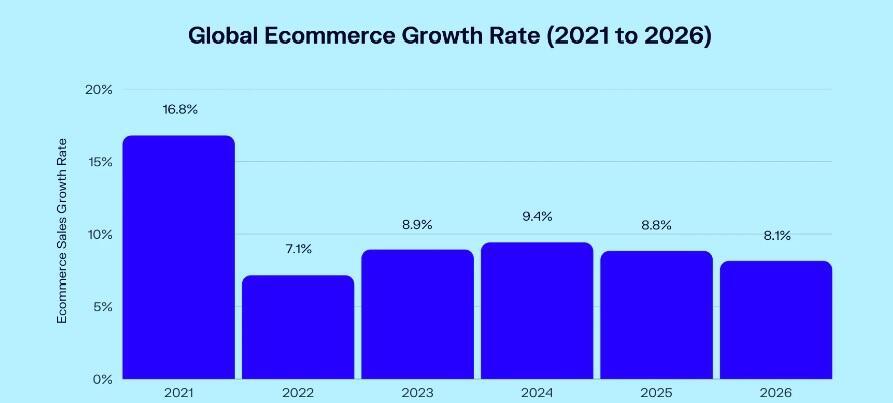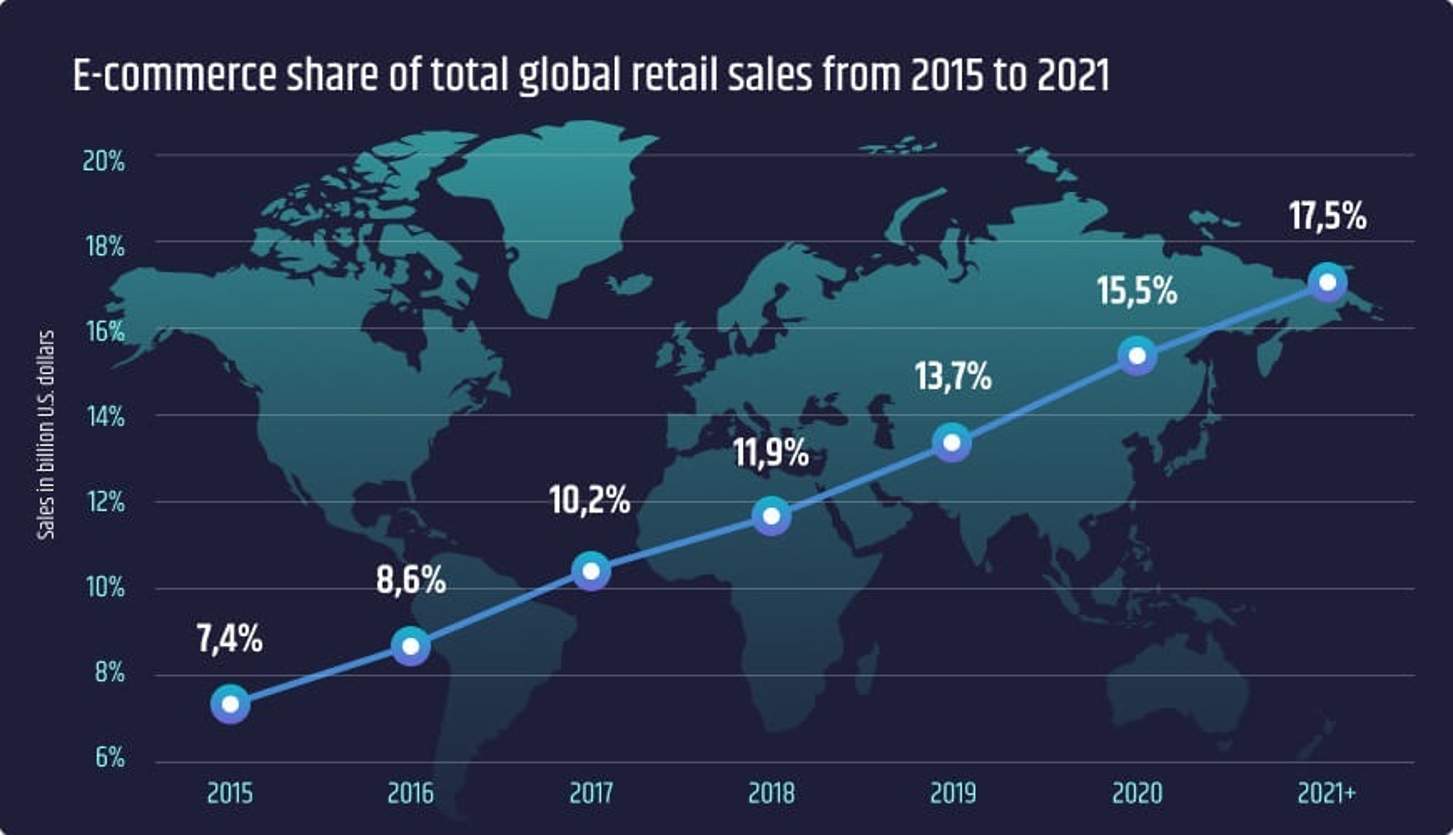The expected global eCommerce growth rate for 2023 stands at 8.9%, pushing worldwide e-commerce sales to a staggering $5.9 trillion. This represents a notable increase of 1.8 percentage points compared to the growth rate witnessed in 2022, which followed a sharp decline from the peak in 2021.
During 2021, the global e-commerce growth rates skyrocketed to 16.8%, reflecting the largest year-over-year surge anticipated between 2021 and 2026. This exceptional growth can be attributed to the impact of the COVID-19 pandemic.

The outbreak of the coronavirus compelled governments across the globe to implement stringent lockdown measures, leading to the closure of physical stores and confinement of consumers to their homes.
As a result, online retail witnessed a significant boost, with people turning to the internet for their shopping needs. However, in 2022, as most countries began easing restrictions, consumers started returning to brick-and-mortar stores, favoring in-store shopping over online retail, which resulted in a comparatively slower growth rate for e-commerce.
Despite the dip in growth rate in 2022, experts predict that the expansion of global e-commerce sales will continue, albeit at a more moderate pace.
While slight increases are expected for the current year and the next, projections indicate that the pace of growth is likely to decelerate in the years ahead.
Global Ecommerce Sales Forecast To Increase By 50%
Analysis of ecommerce sales growth in the largest global markets indicates a robust and upward trend in online shopping, particularly in the United States.
Forecasts predict a staggering 50% increase in ecommerce sales in the US, soaring from $907.9 billion in 2022 to an impressive $1.4 trillion by 2025.
In Europe, the growth is projected to be slightly slower but still substantial, with a 47% increase in ecommerce sales during the same period.
Meanwhile, China remains at the forefront, dominating the market with an impressive 46.3% share of all retail ecommerce sales worldwide. In 2022, China’s online sales surpassed the significant milestone of $2.8 trillion, solidifying its position as the leader in the digital commerce landscape.
On the other hand, the rest of the world is anticipated to witness a remarkable surge of 52% in online sales, jumping from just over $1 trillion in 2022 to an estimated $1.5 trillion by 2025.
These growth statistics underscore the increasing popularity and prevalence of ecommerce across the globe, with the US leading the way in terms of rapid expansion, while other regions continue to embrace the digital shopping revolution.
Increasing Demand For New e Commerce Sales Platforms
Seasoned IT and software development professional and Founder of GetTrusted.io Oleg says E-commerce development companies are in huge demand these days.
“They have helped many businesses to grow their online presence, increase sales and boost their ROI by providing them with advanced e-commerce solutions,”
“ECommerce sites tend not only to offer better user experience but also better conversion rates than other types because users don’t feel rushed when buying things online,”
“There aren’t any distractions present during this process (such as people talking nearby) which makes them more relaxed about making purchases from websites rather than walking into physical stores where there might be crowds jamming up traffic flow at peak times like before Christmas holidays,” he said
The world of eCommerce is witnessing an unprecedented surge in demand for revolutionary sales platforms that are redefining the very essence of online shopping.
As the digital landscape continues to evolve at breakneck speed, traditional eCommerce solutions are facing the relentless tide of change, paving the way for the rise of innovative platforms that cater to the ever-growing consumer expectations.
This coincides with race for digital dominance, entrepreneurs, businesses and tech giants are frantically seeking the golden ticket to unlock the untapped potential of online sales. The rapid advancements in technology, coupled with a dynamic shift in consumer preferences, have rendered obsolete the once-favored eCommerce platforms of yesteryears.
In 2023, we can expect to see continued growth in the eCommerce market. Retailers who stay ahead of these trends and provide exceptional customer experiences will be well-positioned for success in the years to come







